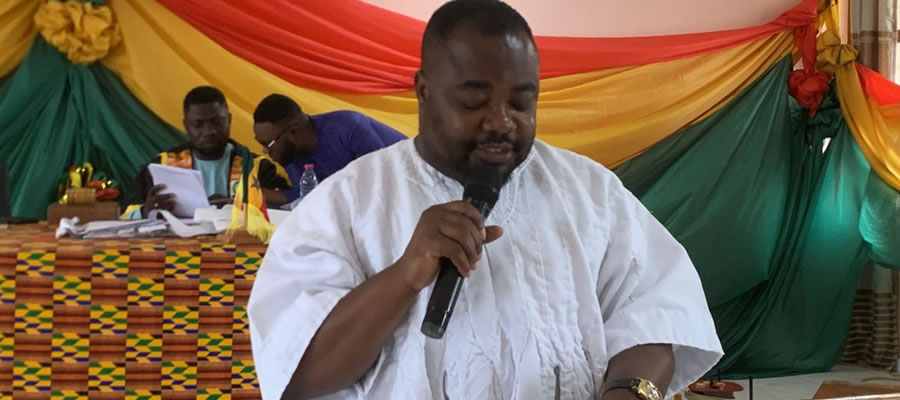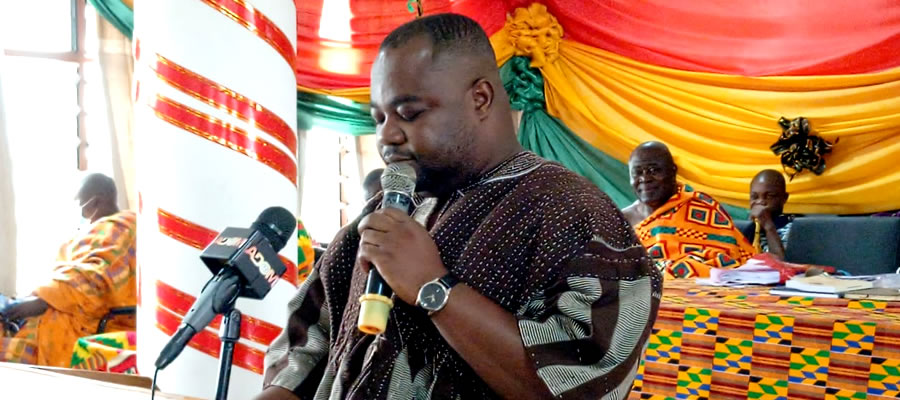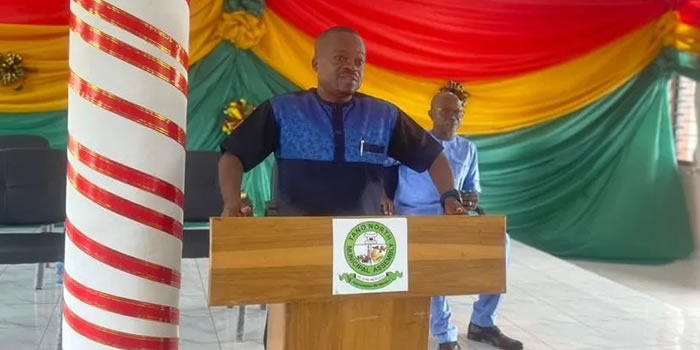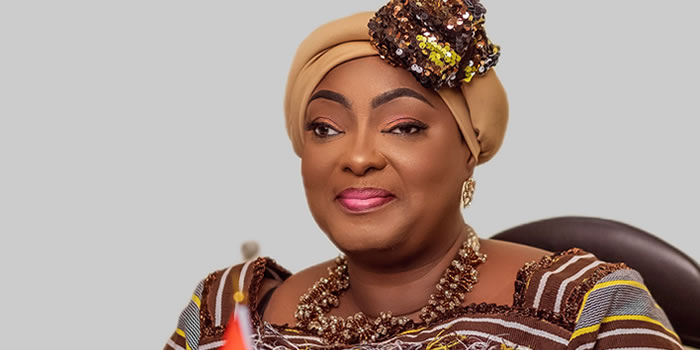

Housing
Housing is a pre-requisite to the healthy development of human beings and provides the framework within which their socio-economic and cultural needs are met. Extracts from the 2010 PHC Report indicates the Municipal has total of 12,420 houses with 6,877 in rural and 5,543 in urban constituting 55.4% and 44.6% respectively.
The most common building type is the compound house. It a 61.4 % of the total housing units. The majority of the houses are built of sandcrete and landcrete which constitute about 52.6 percent of the houses in the Municipal. Irrespective of locality of residence, the main material used for roofing dwelling units in the Municipal is metal sheets (89.1%). In addition, relatively high proportions of dwelling units in the rural areas use thatch/palm leaf/raffia (10.9%) and bamboo (6.0%) as roofing materials.
Quite a number of dwellings in urban areas also use thatch/palm leaf/raffia (5.6%) for roofing. On average there are 6.3 persons and 1.5 households per house. The average household size is 4.3in the Municipal. The average household size is higher in rural areas (4.7) than in urban areas (3.9). However persons per house and household per house are higher in urban areas than in rural area (Source: 2010 Population & Housing Census).
Most of the structures in the Municipal are poorly constructed with low quality building materials. The phenomenon is probably due to high poverty levels in the Municipal. There are no drains linking the various structures into one system. Deep cracks are also common on structures in the Municipal. The structures in the Municipal in fact are built/put-up in a haphazard manner. Adherence to Building regulations is also very poor.
Generally, towns in the Municipal are not well laid out and therefore, do not have good internal road network. However, Duayaw Nkwanta with the implementation of the street naming and property addressing system has improved the layout of the community.
Energy Sources for household Cooking
The primary source of fuel for household cooking in the Municipal is wood. The 2010 PHC reports shows that Wood (62.3%), Charcoal (21.1%), and Gas (7.2%) are the main sources of cooking fuel in the Municipal. In rural areas, Wood (85.0%) is the main source of cooking fuel while in urban areas it is Wood (45.1%) and Charcoal (32.5%).
It can be seen from the table that close to 85% (84.3%) of the households resort to wood and charcoal as fuel for cooking. This is predominantly used by households since is relatively cheaper than other sources. These are products from the forest and has enormous effects on the environment such as loss of vegetation, destruction of habitat of most species, loss of soil fertility, drying up of water bodies and land degradation.
However, less than 10% of the households use Liquefied petroleum gas and other sources for cooking. Although these other sources have effects on the environment, it cannot be compared to wood fuel. There is the need to encourage the use of LPG by majority of the people.
Energy
The table below shows the main sources of lighting of dwelling units in the Tano North Municipal. It is observed that 5 out of every 10 households (55.0%) have access to electricity from the main national grid, 27.5 percent use flashlight and 15.4 percent use kerosene lamp. More than 70 percent (72.4%) of urban households and about one-third (34.0%) of rural households use electricity as their main source of light. In the rural areas, flashlight/torch (38.1%) is the main source of light. A quarter (25.7%) of households in rural areas also use kerosene lamp as light.
Information and Communication Technology (ICT)
Currently, about 42percent of the population in the Municipal has access to MTN, Tigo and Vodafone mobile services. Plans are also advanced to connect more communities with these mobile services. The Municipal Assembly has three functional internet facilities which enable it to access and send information to other parts of the globe.
Infrastructure and Social Services
Roads
The Municipal is privileged to have its capital located on the Kumasi – Sunyani highway. The Municipal is equally accessible in terms of feeder roads. One of such road that quickly comes to mind is Duayaw Nkwanta – Akomadan/Offinso Road through Techimantia and Tanoso-Yamfo-Bomaa-Tepa road. The feeder roads are reasonably motorable throughout the year.
Telecommunications
The Municipal capital and some relatively large settlements like Yamfo, Bomaa, Terchire, Tanoso and Adrobaa, etc enjoy the services of Vodafone, MTN, Tigo, Glo and Airtel. Duayaw Nkwanta has only one FM station (Charity FM). There are a number of Community information centers operating in the Municipal.
Hospitality
A number of guest houses can be located within the Municipal. They are 58 Juliderm Guest House, Palace Way Guest House, Royal Guest House (Duayaw Nkwanta & Bomaa), Kyei Nimako Guest House, Meet Me There Guest House, Fulmer Guest House, Krama Guest House, Respond Guest House, Forest Guest House, Nana Boama Guest House, Stagasons Guest House etc.
Lorry terminals
Lorry terminals do not only facilitate transportation services in the Municipal but also serve as revenue sources for the Assembly. The Municipal has two well paved lorry terminals located at Duayaw Nkwanta and Yamfo. Bomaa has a station but has not been developedthe place becomes muddy when it rains and has no modern infrastructure to enhance service delivery. With the increasing number of commercial vehicles and the emergence of Tricycle (Pragyia) in Duayaw Nkwanta, there is the need for the assembly to develop additional stations at vantage points to curb congestion in the future.
Post Offices
Although the significance of post offices is dwindling with the emergence of internet services, they still play important role in communication. A quick transformation of this sector to meet current demands is anticipated.
Post offices are found in major settlements of the Municipal namely Duayaw Nkwanta, Bomaa, and Yamfo. With the exception of Duayaw Nkwanta Post which is fully functional the rest are not functioning well due to low patronage.
Date Created : 11/23/2018 5:35:50 AM












 facebook
facebook
 twitter
twitter
 Youtube
Youtube
 +233 593 831 280
+233 593 831 280 0800 430 430
0800 430 430 GPS: GE-231-4383
GPS: GE-231-4383 info@ghanadistricts.com
info@ghanadistricts.com Box GP1044, Accra, Ghana
Box GP1044, Accra, Ghana